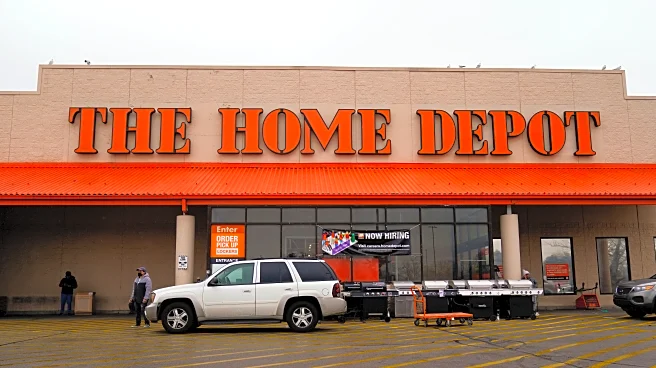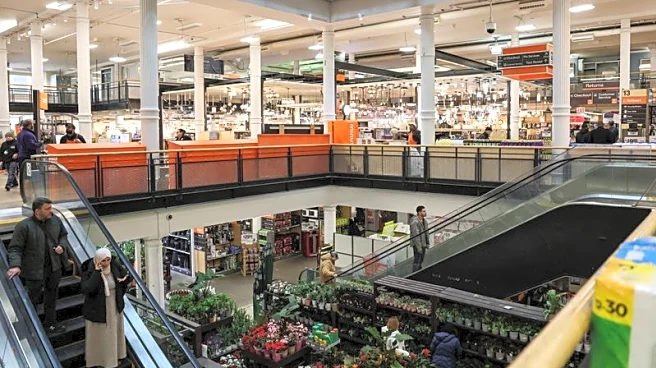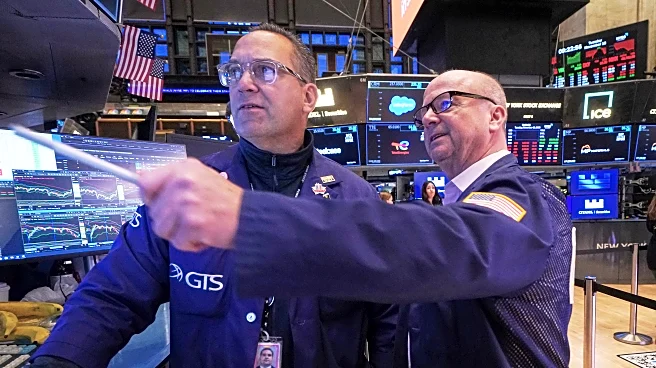What's Happening?
Home Depot has revised its annual profit outlook, projecting a larger decline than previously anticipated. The company now expects its adjusted earnings per share to fall by 5%, compared to an earlier forecast of a 2% drop. This adjustment comes as Home Depot faces
subdued demand due to high mortgage rates and consumer uncertainty, which have impacted the home improvement sector. The company's shares fell by approximately 4%, while rival Lowe's saw a 2% decline in its stock. Home Depot's CEO, Ted Decker, highlighted that consumer uncertainty and pressure in the housing market are disproportionately affecting demand for home improvement projects. The company reported flat comparable sales in the third quarter, with a 1.6% drop in comparable transactions, as customers delayed major renovations. Despite these challenges, Home Depot's sales of $41.35 billion exceeded expectations.
Why It's Important?
The revision of Home Depot's profit outlook and the subsequent decline in its stock price underscore the broader economic challenges facing the home improvement industry. High mortgage rates and consumer uncertainty are leading homeowners to prioritize essential repairs over large-scale renovations, affecting sales for major retailers like Home Depot and Lowe's. This situation reflects wider economic concerns, including tariff-driven cost pressures and a slowing economy, which could have significant implications for consumer spending patterns. As Home Depot sets the tone for upcoming earnings reports from other big-box retailers, investors are closely monitoring consumer behavior ahead of the holiday season, a critical period for retail sales.
What's Next?
Home Depot's revised outlook and the current economic climate suggest potential challenges for the home improvement sector in the near term. As Lowe's prepares to report its results, the industry will be watching for similar trends in consumer spending and demand. Retailers may need to adjust their strategies to address the impact of high mortgage rates and economic uncertainty. Additionally, the upcoming holiday season will be a crucial test for consumer confidence and spending, with potential implications for the broader retail market. Stakeholders, including investors and industry analysts, will be keenly observing these developments.















